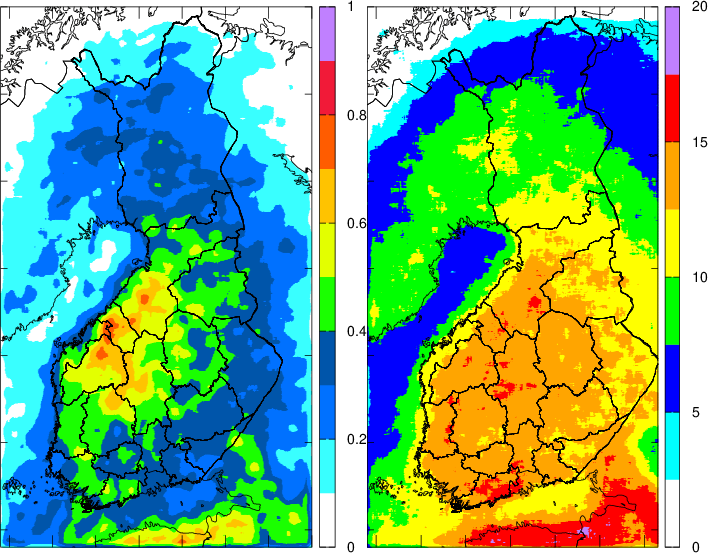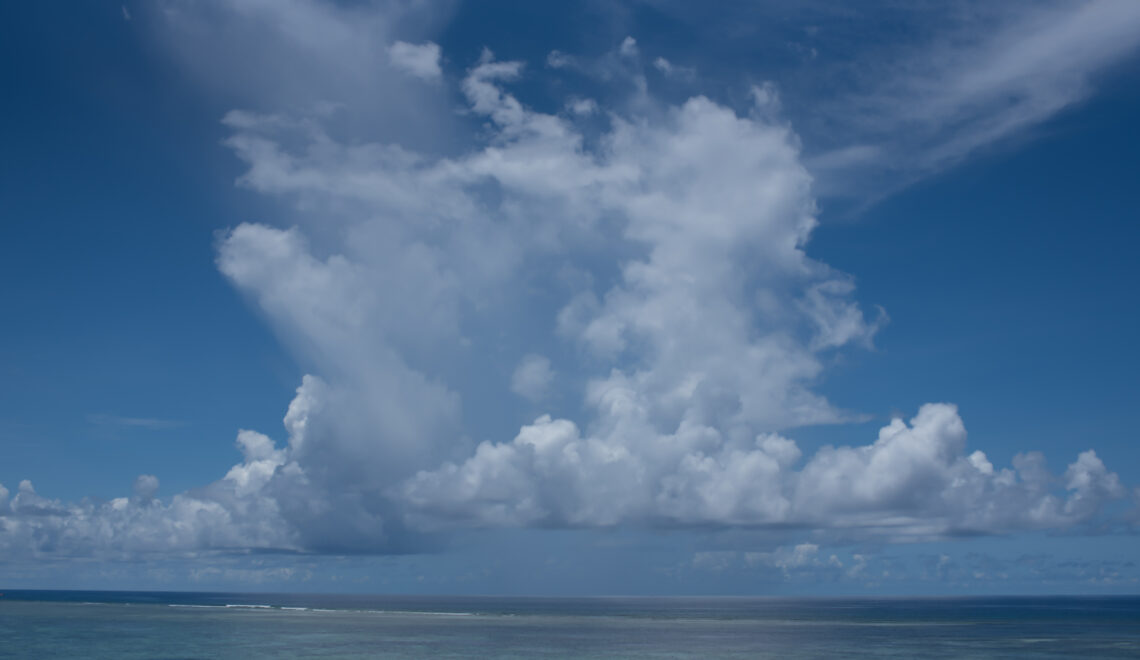Lightning location data from an extensive period can be used to characterise the typical occurrence of thunderstorms and lightning. In Finland, most of the lightning occurs in the western parts.
ANTTI MÄKELÄ, TERHI K. LAURILA
Finnish Meteorological Institute
Thunderstorms cause annually high societal impacts worldwide and also in the Northern Europe. Nowadays, lightning location systems and the data they provide are an essential part of weather services. In addition to the real-time observations of lightning occurrence, the data enables the analysis of, for example, the local thunderstorm climatology.
In this study, we present the updated cloud-to-ground flash density and thunder day statistics of Finland from the period 2002–2018; from this period, the lightning location system can be considered homogeneous with respect to cloud-to-ground lightning. The lightning location system of the Finnish Meteorological Institute (FMI) is at present practically the same as described in earlier studies (Mäkelä et al. 2010; Mäkelä et al. 2014). The main difference compared to the previous studies is the longer data period, extending now to almost twenty years. We note that the FMI’s location system was established already in 1998, but the coverage of all of Finland was established in 2002. Cloud-to-ground flash density and the average annual number of thunder days are the most commonly used parameters for describing the occurrence of lightning and thunderstorms. Flash density is calculated by the sum of observed lightning in spatial grid during the data period and dividing the sum by the data period in years. The thunder day number is originally defined as the number of days per year that lightning is heard at an observation site (WMO, 1956). Although the original definition is based on human observations, the number can be calculated also from lightning location data as explained in Mäkelä et al. (2014).
The occurrence of cloud-to-ground lightning and thunder days (Fig. 1) show both similar and dissimilar spatial features. Firstly, the south-north distribution is largely similar, indicating that most of the thunderstorm and lightning activity take place in the southern half of the country. Indeed, the division between Northern and Southern Finland is very sharp. This is likely related to the shorter summer (i.e., convective) season in the North. Secondly, there is a sharp contrast between the sea and land areas, and especially the Gulf of Bothnia seems to mitigate the occurrence of deep moist convection and formation of thunderstorms. Over the Gulf of Finland, the effect is not as clear, suggesting that this water area is too narrow for mitigating thunderstorms coming from the South. The largest dissimilarity in the average annual occurrence of lightning and thunder days is that the regions of largest values do not necessarily overlap. For example, some locations near the southern coast show high amount of thunder days although the amount of lightning does not peak there; this suggests that there are differences in the intensity of individual thunderstorms, i.e., in some places the thunderstorms do not produce as much lightning as others (and vice versa).

References
Mäkelä, A., et al., 2010: A decade of high-latitude lightning location: Effects of the evolving location network in Finland, Journal of Geophysical Research: Atmospheres, 115(D21), DOI: 10.1029/2009JD012183
Mäkelä, A., et al., 2014: Nordic Lightning Information System: Thunderstorm climate of Northern Europe for the period 2002–2011, Atmos. Res., 139, 46–61, DOI: 10.1016/j.atmosres.2014.01.008
WMO, World Meteorological Organization (WMO), 1953: World distribution of thunderstorm days, WMO Rep. 21, 204 pp., Geneva, Switzerland.
Header image: Unsplash
HOW TO CITE THIS ARTICLE:
Laurila T. K., and Mäkelä A., 2019: Thunderstorm observations in Finland – lightning location data 2002–2018, FMI’s Climate Bulletin: Research Letters, 1(2), 5, DOI: 10.35614/ISSN-2341-6408-IK-2019-14-RL
CITATION INFORMATION:
Authors: Antti Mäkelä and Terhi K. Laurila
Received: September 10, 2019
Accepted: December 13, 2019
First online: December 19, 2019
Journal: FMI’s Climate Bulletin: Research Letters
Volume: 1
Issue: 2
Page: 5
DOI: 10.35614/ISSN-2341-6408-IK-2019-14-RL




